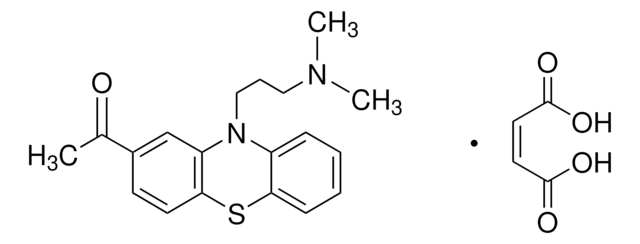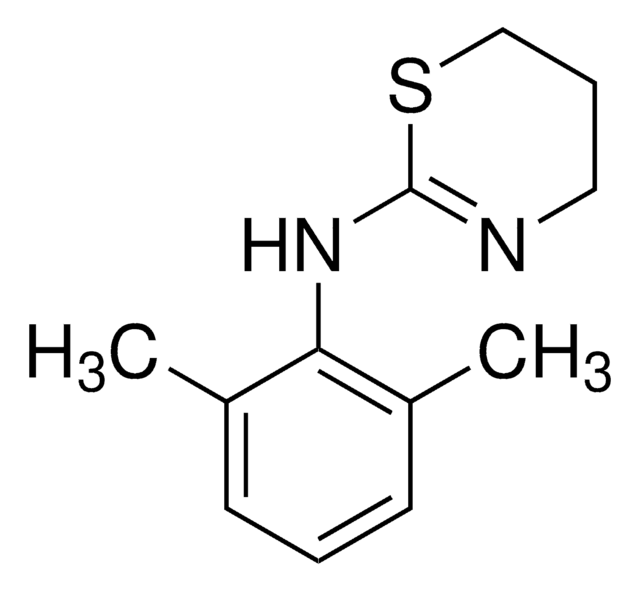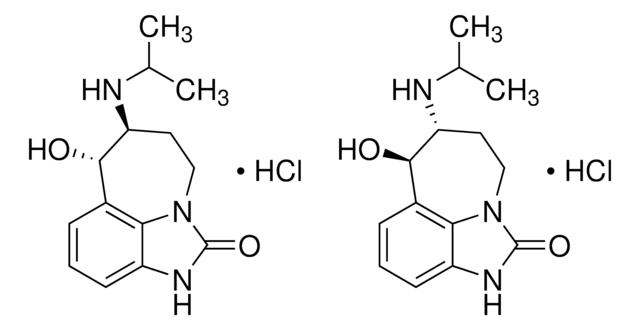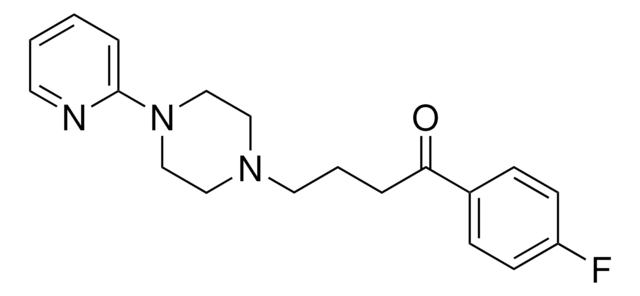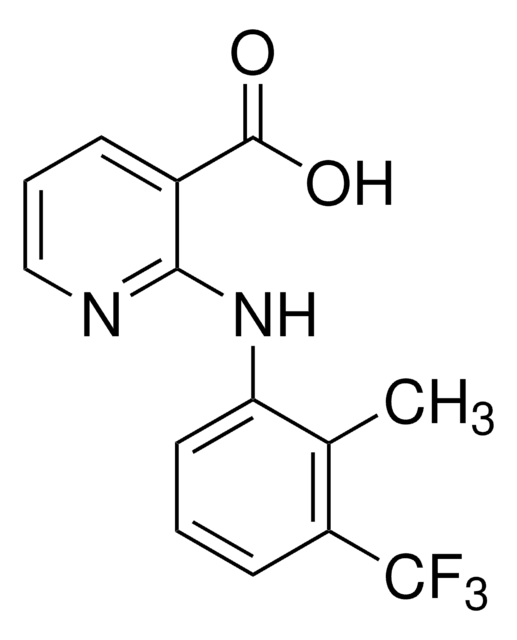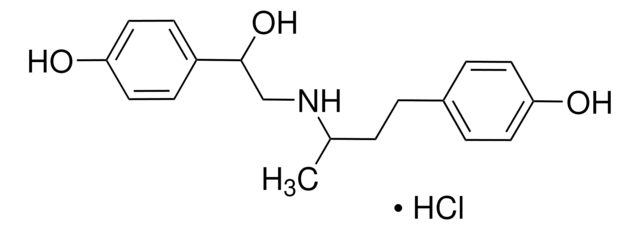A7111
Acepromazine maleate
≥98% (HPLC)
Sinonimo/i:
Acetopromazine maleate salt, 2-Acetyl-10-(3-dimethylaminopropyl)phenothiazine maleate salt, Acepromazine maleate salt
About This Item
Prodotti consigliati
Saggio
≥98% (HPLC)
Forma fisica
powder
Condizioni di stoccaggio
protect from light
Colore
yellow
Solubilità
H2O: >10 mg/mL
Temperatura di conservazione
room temp
Stringa SMILE
OC(=O)\C=C/C(O)=O.CN(C)CCCN1c2ccccc2Sc3ccc(cc13)C(C)=O
InChI
1S/C19H22N2OS.C4H4O4/c1-14(22)15-9-10-19-17(13-15)21(12-6-11-20(2)3)16-7-4-5-8-18(16)23-19;5-3(6)1-2-4(7)8/h4-5,7-10,13H,6,11-12H2,1-3H3;1-2H,(H,5,6)(H,7,8)/b;2-1-
FQRHOOHLUYHMGG-BTJKTKAUSA-N
Cerchi prodotti simili? Visita Guida al confronto tra prodotti
Applicazioni
- as a component of anesthesia cocktail to test its effects on behavioral changes in rats
- as a component of anesthesia cocktail to study its effects on lung resistance of rats
- as an anti-psychotic pharmaceutical agent to study its cytotoxic effects on malignant glioma in glioblastoma (GBM) cells
Azioni biochim/fisiol
Caratteristiche e vantaggi
Avvertenze
Danger
Indicazioni di pericolo
Consigli di prudenza
Classi di pericolo
Acute Tox. 3 Oral - STOT SE 3
Organi bersaglio
Central nervous system
Codice della classe di stoccaggio
6.1C - Combustible acute toxic Cat.3 / toxic compounds or compounds which causing chronic effects
Classe di pericolosità dell'acqua (WGK)
WGK 1
Punto d’infiammabilità (°F)
Not applicable
Punto d’infiammabilità (°C)
Not applicable
Certificati d'analisi (COA)
Cerca il Certificati d'analisi (COA) digitando il numero di lotto/batch corrispondente. I numeri di lotto o di batch sono stampati sull'etichetta dei prodotti dopo la parola ‘Lotto’ o ‘Batch’.
Possiedi già questo prodotto?
I documenti relativi ai prodotti acquistati recentemente sono disponibili nell’Archivio dei documenti.
I clienti hanno visto anche
Articoli
Sigma-Aldrich offers many products related to dopamine receptors for your research needs.
Il team dei nostri ricercatori vanta grande esperienza in tutte le aree della ricerca quali Life Science, scienza dei materiali, sintesi chimica, cromatografia, discipline analitiche, ecc..
Contatta l'Assistenza Tecnica.